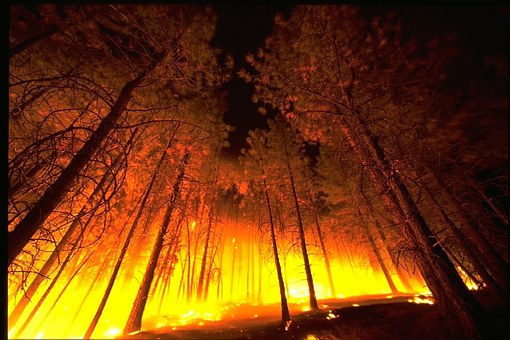California Regulator Approves Utility Wildfire Plans, Proactive Power Shutoffs

The California Public Utilities Commission on May 30 approved wildfire mitigation plans for the state’s electric utilities in response to legislation enacted last year that directed electric corporations to file annual plans describing measures to prevent, combat, and respond to wildfires in their service areas. The commission also made enhancements to communication and notification guidelines for proactive de-energization of power lines during dangerous conditions that could cause wildfires from equipment failures.
The agency said that proactive power outages, called Public Safety Power Shutoffs, must be a measure of last resort. Utilities are required to coordinate with the Office of Emergency Services to link their warning programs with other agencies and jurisdictions, in order keep the public informed about de-energization events. The decision also directs utilities to report on lessons learned from each event, in order to refine their practices.
In approving the 2019 mitigation plans, the agency directed electric corporations to track data and evaluate the outcomes to improve future plans. Utility efforts range from stepping up tree-trimming activities to enhancing overhead inspection, and hardening the system such as replacing wooden poles. The plans were filed by Pacific Gas and Electric Company, Southern California Edison, San Diego Gas and Electric, Liberty Utilities/CalPeco Electric, Bear Valley Electric Service, Pacific Power, Trans Bay Cable LLC, and NextEra Energy Transmission West LLC.
The 2018 fire season in California was the most destructive, causing more than 8,000 fires that burned close to 2 million acres, according to the agency. Years of drought, changing weather patterns, extreme heat, strong winds, and low humidity were among the factors that led to the destruction. Last July was the hottest month on record in California.
PG&E filed to reorganize under Chapter 11 of the U.S. bankruptcy code to deal with billions of dollars in potential liability associated with the 2017 and 2018 Northern California wildfires. Last month, the utility requested a $1.2 billion hike in its revenue requirement, with plans to invest up to $28 billion in energy infrastructure upgrades over the next four years, in the face of wildfire risks.
EnerKnol Pulses like this one are powered by the EnerKnol Platform—the first comprehensive database for real-time energy policy tracking. Sign up for a free trial below for access to key regulatory data and deep industry insights across the energy spectrum.
ACCESS FREE TRIAL


